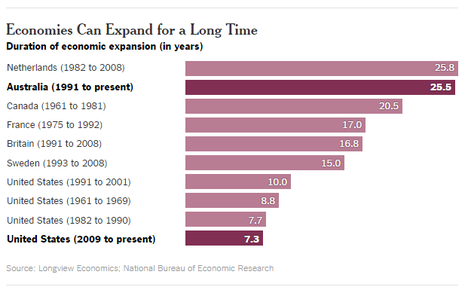(p. C2) Here today, gone in a millisecond. At least that’s how we used to think about short-term, or working, memory. But a study just published in the journal Science tells a different story. A recent idea or word that you’re trying to recall has not, in fact, gone AWOL, as we previously thought. According to new brain-decoding techniques, it’s just sleeping.
“Earlier experiments show that a neural representation of a word disappeared,” said the study’s lead author, Brad Postle, a professor of psychology and psychiatry at the University of Wisconsin-Madison. But by using a trio of cutting-edge techniques, Dr. Postle and his team have revealed just where the neural trace of that word is held until it can be cued up again.
. . .
To confirm that the memory still existed even while a person was not thinking about it, the scientists used another recent technique, transcranial magnetic stimulation, or TMS. They positioned a wand over a participant’s scalp and delivered a harmless magnetic pulse to the brain areas that held the images. The pulse made the distinctive neural signature of those fleeting memories visible to the scientists and triggered their recall in the students.
Dr. Postle compared working memory to paper inscribed with invisible ink. Words written in lemon juice are initially imperceptible, but by passing a hot cup of coffee over the paper, “you can see the part of the message that was heated up…. Our TMS is like the coffee cup.” In this way the team activated a memory that was not only temporary but below the student’s level of consciousness.
Using Dr. Postle’s new trifecta of brain-imaging and brain-stimulation techniques to reactivate forgotten memories has enticing–though still remote–therapeutic possibilities. It is neuroscience’s most faithful reading yet of the real-time content of our thoughts–about as close as we have ever come to mind-reading.
“Our study suggests that there’s information in the penumbra of our awareness. We are not aware that it’s there, but it’s potentially accessible,” said Dr. Postle.
For the full commentary, see:
SUSAN PINKER. “What You Just Forgot May Only Be ‘Sleeping’.” The Wall Street Journal (Sat., Jan. 7, 2017): C2.
(Note: ellipsis between paragraphs added; ellipsis internal to paragraph in original.)
(Note: the online version of the commentary has the date Jan. 5, 2017, and has the title “What You Just Forgot May Be ‘Sleeping’.”)
The Postle paper, discussed above, is:
Rose, Nathan S., Joshua J. LaRocque, Adam C. Riggall, Olivia Gosseries, Michael J. Starrett, Emma E. Meyering, and Bradley R. Postle. “Reactivation of Latent Working Memories with Transcranial Magnetic Stimulation.” Science 354, no. 6316 (Dec. 2, 2016): 1136-39.


